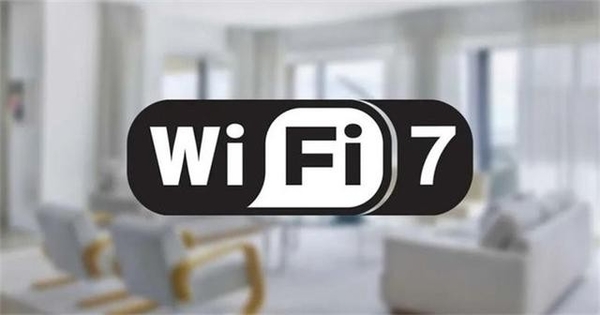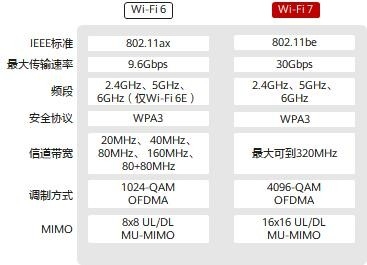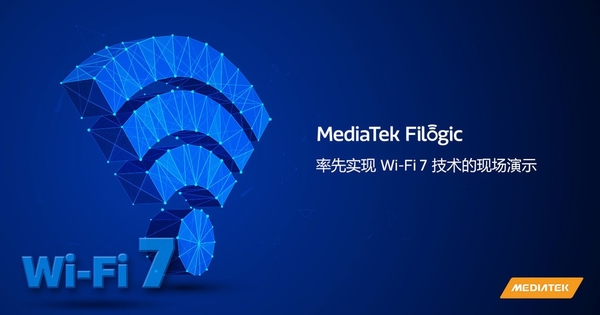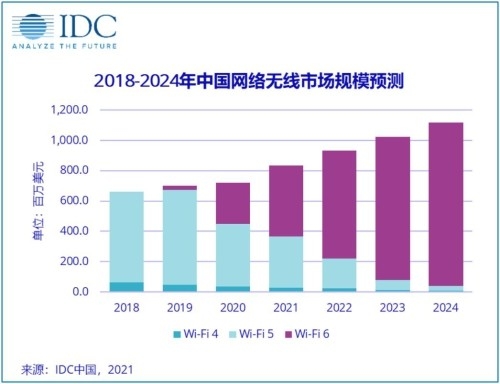Wi-Fi 6 is not yet popular, why is the latecomer Wi-Fi 7 becoming a giant in the competition?

When it comes to Wi-Fi, everyone is no stranger to it. Since the popularity of smart terminals, Wi-Fi has become one of the mainstream ways for electronic devices to access the network. In recent years, the intergenerational evolution of Wi-Fi technology has continued. Today, Wi-Fi 5 is still mainstream, Wi-Fi is in the limelight, and Wi-Fi 7 is coming quietly. On this stage, what they staged was not like a big show of "We sing and you come on stage", but like a "competition on the same stage".
Although in early 2022, as an upgraded version of Wi-Fi 6, Wi-Fi 6E is clearly already at the forefront of technology. However, just when Wi-Fi 6E is not commercialized, and even Wi-Fi 6 is still on the cusp, in order to seize the next-generation wireless network technology market, Qualcomm, MediaTek, Realtek and other manufacturers have begun to deploy WiFi 7. Today, Wi-Fi 7 has become a battleground for giants.

Technology evolution, Wi-Fi 7 will bring a great experience
In 1997, the first-generation Wi-Fi standard protocol 802.11 was formulated. After more than 20 years, the 802.11 standard protocol has grown and evolved into today's seventh-generation 802.11be, which is what we call Wi-Fi 7. It is reported that Wi-Fi 7 is based on Wi-Fi 6 and introduces technologies such as 320MHz bandwidth, 4096-QAM, Multi-RU, multi-link operation, enhanced MU-MIMO, and multi-AP collaboration, making Wi-Fi 7 Compared with Wi-Fi 6, it will provide higher data transfer rates and lower latency.

At the time of formulation, IEEE divided Wi-Fi 7 into two phases, R1 and R2, with a total of 4 drafts, and the official version is expected to be released in mid-2024. At present, although the first draft has been released, from the timetable, Wi-Fi 7 is still far from the official release. From the published draft 1, Wi-Fi 7 will bring the following changes:
First of all, it supports the Multi-RU mechanism, similar to allocating multiple idle lanes to a tank on the highway, which will further improve the spectrum utilization and greatly improve the bandwidth and delay. Secondly, it supports the Multi-Link multi-link mechanism, redefines the technologies related to multi-link aggregation, and greatly improves the bandwidth, delay and reliability. Third, more spatial streams are supported, of which the maximum number of spatial streams per radio frequency is as high as 16. In theory, the physical transmission rate is more than doubled compared to Wi-Fi 6.
In addition, Wi-Fi 7 also supports coordinated scheduling between multiple APs, which can coordinate time domain, frequency domain and other resources and interference in the entire network of APs. It includes features such as Cooperative Spatial Multiplexing (CoSR), Cooperative Orthogonal Frequency Division Multiple Access (Co-OFDMA), and Cooperative Beamforming (CoBF), which will greatly improve the utilization of air interface resources.
Based on the above characteristics, Wi-Fi 7 can help industrially manufactured all-wireless products to achieve flexible production, help mines to realize unmanned mining, and realize automatic inspection by robots. At the same time, with the characteristics of high bandwidth and low latency, Wi-Fi 7 will also greatly promote the rapid development of scenarios such as metaverse and edge computing.
Even if the global Wi-Fi 7 technical specifications have not yet been finalized at this stage, driven by new concepts and applications such as Metaverse, autonomous driving, and AIOT, the industry is naturally optimistic about the development of the follow-up market.
Giants grab the beach, stage a new round of competition
The Wi-Fi 6 competition is in the ascendant, and Wi-Fi 7 has ushered in a new giant competition. Since 2022, three major manufacturers, MediaTek, Broadcom, and Qualcomm, have successively released Wi-Fi 7 master chips or related technologies and solutions. Among them, MediaTek demonstrated its Wi-Fi 7 live in January this year. It is reported that MediaTek Wi-Fi 7 can pass 320MHz channel and 4K Quadrature Amplitude Modulation (QAM) technology, the transmission speed is 2.4 times faster than Wi-Fi 6, and the peak speed can reach 30Gbps.

At the same time, MediaTek Wi-Fi 7 demonstrates Multi-Link Operation (MLO) technology, which aggregates multiple channels on different frequency bands at the same time. Even if the frequency band is interfered or congested, data can still be transmitted seamlessly, resulting in faster and more reliable. network connection. In addition, MediaTek Wi-Fi 7 has a multi-user resource unit (MRU) function to reduce and avoid signal interference, allowing multiple people to connect at the same time and at high speed.
In April 2022, Broadcom launched the Wi-Fi 7 SoC with a quad-core Armv8 processor capable of delivering 24 DMIPS performance, and released a Wi-Fi 7 ecosystem product portfolio, including for consumer and enterprise products, as well as for Multiple models of mobile devices. It is reported that Broadcom is providing Wi-Fi 7 samples to customers.
Qualcomm released the world's first Wi-Fi 7 chip commercial solution FastConnect 7800, which supports high-frequency multi-connection concurrent technology, 4K QAM modulation technology, and supports 2.4GHz, 5GHz, and 6GHz three frequency bands. The peak transmission speed can reach 5.8Gbps, the peak The downlink is up to 5.8Gbps, supporting a delay of less than 2ms.
In addition, recently, ZTE 5G launched the Wi-Fi 7 standard 5G CPE product MC888 Flagship at the MWC conference. This product integrates Wi-Fi 7 high concurrency technology and 5G high speed, and the network download peak speed is as high as 10Gbps. Coincidentally, H3C also released an enterprise-level smart native Wi-Fi 7 AP, which supports iRadio, iStation, iEdge and iHeal technologies. It is reported that the channel utilization rate is increased by 56%, the terminal access efficiency is increased by 33%, and the service transmission channel is increased by 220%. Network operation and maintenance time is shortened by 30%.
The road is bumpy, when will it be commercially available?
According to the 2018-2024 China network wireless market scale forecast released by IDC China, the Wi-Fi 6 standard was released in 2019, the market was in a wait-and-see period in the same year, and Wi-Fi 5 was still not mainstream in the market. In 2020, the Wi-Fi 6 market will show explosive growth, but Wi-Fi 5 still accounts for more than half of the market. In 2021, Wi-Fi 6 will surpass Wi-Fi 5 for the first time, and Wi-Fi 5 still occupies a certain market share.
We can see that it took 2 years for Wi-Fi 6 to surpass Wi-Fi 5 for the first time in 2021 from the release of the standard in 2019. Many viewpoints believe that Wi-Fi 7 will also follow this rule. In other words, Wi-Fi 6 still has at least 4 years to occupy the mainstream position in the market.

SourceIDC
In addition, Wi-Fi 7 has an ultra-large bandwidth of at least 30Gbps. The main reason is that it uses the 6GHz frequency band under the Wi-Fi 6E standard. This new frequency band brings a spectrum bandwidth of 1200MHz. At present, the 6GHz frequency band has almost no interference. However, China has not yet given a clear policy on the 6GHz frequency band, and whether 6425-7125MHz will be granted to 5/6G mobile communication or Wi-Fi has not yet been finalized.
In addition, in terms of terminals, although Wi-Fi 7 is backward compatible with terminals such as Wi-Fi 6/5/4, only terminals that support Wi-Fi 7 can unlock their full potential. Perhaps, the Wi-Fi 7 APs listed at this stage cannot take advantage of the improvements in bandwidth, latency, and capacity brought by the Wi-Fi 7 standard. Commercial Wi-Fi 7 is struggling.
write at the end
From Wi-Fi 5 to Wi-Fi 6 to Wi-Fi 7, Wi-Fi technology standards continue to evolve, and corresponding chips, solutions, and hardware terminals will inevitably follow. And the development of AIoT requires Wi-Fi to have higher transmission speed and larger transmission bandwidth. Standing at the node leading to Wi-Fi 7, we have reason to believe that with the continuous participation and competition of giants, WiFi 7 is expected to play a greater role in the future.